Table of Contents
The mere mention of bougainvillea can instantly make you think of a wall filled with green vines with red, orange, or purple papery flowers. These vines may be too vigorous and enormous for your cramped garden.
Well, don’t worry because Bougainvillea Bonsai is here to save the day. Bougainvillea Bonsais are the bite-sized versions of the mighty vine that will look ideally at home in your living room.
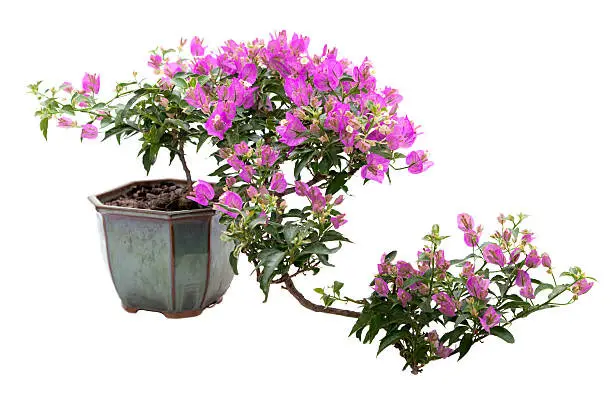
| Scientific name | Bougainvillea Glabra |
| Average height | 15 to 40 feet |
| Average spread | 15 to 40 feet |
| Origin country | China, Korea, Japan |
| Family | Nyctaginaceae |
| Flower Bloom Time | Seasonal |
| Flower Bloom Color | Purple, red, pink and yellow |
| Water | Moderate |
| Sunlight | Full sun |
| Maintenance | Medium |
Bougainvillea bonsai history
The Bougainvillea Bonsai is the genus of ornamental flowering plants native to South America, specifically Argentina, Brazil, and Peru. Its name was taken after Louis Antoine de Bougainville, a French Navy Admiral. The French botanist Philibert Commerco discovered the bougainvillea in 1768 who accompanied Bougainville during his voyage of circumnavigating the world.
Bougainvillea bonsai care
There are a few things you need to remember when caring for your Bougainvillea Bonsai to ensure that they remain beautiful all year long.
Bougainvillea bonsai climate
The Bougainvillea loves the sun, so be sure that it gets about 6 hours of good sun daily. This will ensure that your plant will be healthy and give off that stunning color they are known for.
If you live in a region with a cooler climate, note that the Bougainvillea Bonsai cannot tolerate frost. It is still possible to grow a Bougainvillea Bonsai, yet you need to take it indoors when the night temperatures go lower than 50 to 55 degrees Fahrenheit.
If you plan to grow the plant indoors, this will grow best in a window with southern or western exposure. The Bougainvillea Bonsai can also tolerate fluorescent light, although the sun will always be the best choice.
Bougainvillea bonsai fertilizer
It is best to feed the Bougainvillea Bonsai once every month during the growing season. Doing so gives your Bonsai the best chance to flower.
There are certain fertilizers for Bougainvillea Bonsai that you can buy online or at local gardening stores. Slow-release fertilizers that contain nitrogen, potassium, and phosphorus in equal ratios can do the job well.
A special word of warning because the use of fertilizer with high nitrogen content will stall the plant’s growth so it won’t be able to bloom fully. You need to use only the correct fertilizer.
Bougainvillea bonsai pruning
It is advised to prune your plant to shape it as needed. But, you need to take extra caution to ensure that you don’t damage the plant. You should avoid pruning if your plant is still dormant. The ideal time for pruning it is when it is still in active growth and health. You can reduce it and cut it to a leaf or two.
You need to train new branches for them to take shape on the wire although older ones can get thick and can no longer be shaped without risks of breaking. With the exception of formal upright, the viney plant can be shaped in any way you want.
Bougainvillea bonsai repotting
The Bougainvillea Bonsai should be repotted every 3 to 5 years, with 3 years for the younger ones and 5 years for those that are already older. It will help ensure that there is no setting in of root rot and while giving your plant the best chance to grow.
A great way to know whether it is already a good time to repot your Bougainvillea Bonsai is to check the container’s drainage holes. It is already time for you to repot if there are already holes that go through the holes. It is best to repot your Bougainvillea Bonsai during warmer months because the plant is not a type of cold weather species.
Similar to other Bonsais, root pruning your Bougainvillea Bonsai must be done during every repotting. Be careful with repotting a younger plant since its roots will be brittle and fine. The roots turn tougher when the plant becomes older but take extra care when you remove the tree from the old pot.
Use well-draining soil when you repot your tree to be sure that the soil stays relatively dry. This plant can endure well with somewhat dryer soil. The Bougainvillea Bonsai soil mix you use must be made up of about 40% to 50% organic material with 50% to 60% hard material like course sand, granulated granite, or pumice.
Bougainvillea bonsai pests and diseases
In general, Bougainvillea Bonsai is protected from all types of pests aside from aphids. The plant’s primary cause of death is fungus forming on the roots because of overwatering. You also need to watch out for common garden pests.
Bougainvillea bonsai soil
Nitrogen-enriched organic fertilizers are the preferred choice for your Bougainvillea Bonsai since these plants need high quantities of nitrogen for their stunningly colored leaves to grow. Bougainvilleas also perform best if the soil contains 40% organic matter and the rest can be made up of decomposed granite, coarse sand, agricultural pumice or a combination of all these.
Bougainvillea bonsai watering
It is important for Bougainvillea Bonsais to have water drainage since roots that stay in moist and damp soil may possibly grow fungus. But, it is a must for you to water your plant on a consistent basis, especially if the plant has lots of foliage.
How to make bougainvillea bonsai bloom
The best thing that you can do to make your Bougainvillea Bonsai to bloom is to actually neglect this a bit. Provided that your plant is placed in an ideal location that gets lots of sun, you don’t fertilize too much, and you don’t overwater, you will not have any issues with blooms.
In case your Bougainvillea Bonsai doesn’t bloom as much as you want it to, you should try to cut down on watering and leave out a fertilizer cycle. This will help encourage blooming.
What kind of bougainvillea can be bonsai
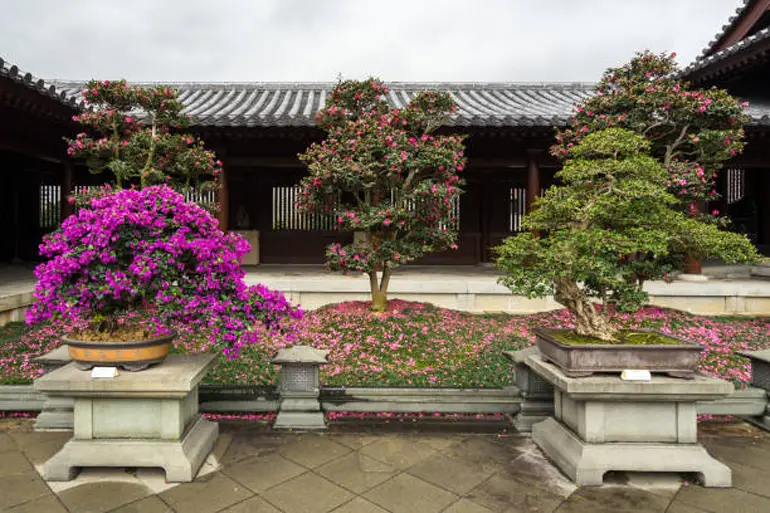
Bougainvillea Bonsai is a great plan to be trained a Bonsai. If you want to bonsai a Bougainvillea, most experts suggest that you choose a red-flowering variety since it tends to be more forgiving.
Another advantage to training your Bougainvillea as a type of bonsai is that this can grow fast enough that you might already be able to display it in just a matter of one growing season.
How to grow bougainvillea bonsai from cutting
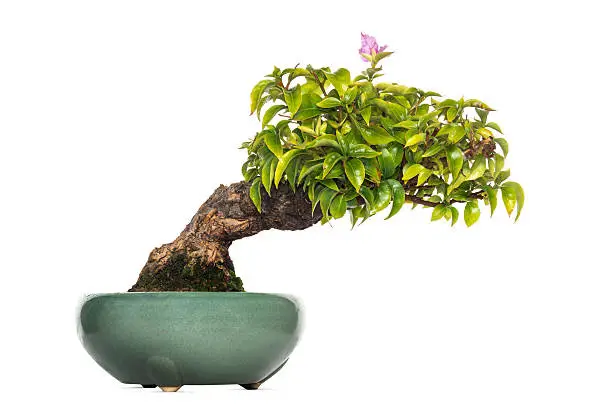
The easiest and simplest way of propagating Bougainvillea Bonsai is from cuttings. Get a small container filled with rooting hormone and lightly damp potting soil. Trim off a small branch of the mother plant then ensure that you remove any leaves at the base of the cutting.
After trimming off excess leaves at the cutting’s bottom, dip this cutting to the rooting hormone then insert this into the damp potting soil. Ensure that the freshly planted cutting is out of harm until you are sure that it has already rooted in. You need to keep the soil somewhat damp but ensure that you don’t overwater to prevent rot in the cutting.
How to grow bougainvillea bonsai from seed
The Bougainvillea Bonsai plants are not that much different from the Bougainvillea vines. While it is less common to propagate Bougainvillea Bonsai from seeds, this remains to be a decent way of going about propagating your plant.
During the autumn season, the Bougainvillea may form seed pods within the small white flower in the center. These pods should be harvested and dried and there must be very tiny seeds inside. The seeds can be planted no matter what time of the year it is provided that you keep them warm. You have to be patient since it may take one month or more for germination to take place.
How long does bougainvillea bonsai take to grow
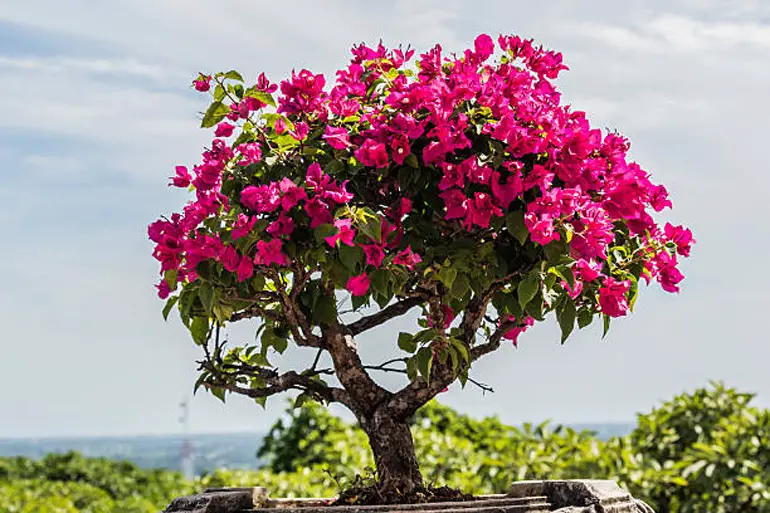
The Bougainvillea is known to be a fast grower, which is a botanical term used for vines that means that they are able to grow over 36 inches a year. The Bougainvilleas will be able to achieve this kind of rapid rate of growth only if they are getting their optimal preferences for growing and weather conditions
Why bougainvillea dropping leaves and flowers
The Bougainvillea Bonsai can drop their leaves and flowers as a response to the cooler temperatures as well as sudden temperature contrasts and because of lower intensity of sunlight during winter months.
It means that temperature doesn’t necessarily need to drop lower than freezing for the Bougainvilleas to drop leaves all of a sudden. However, this might be a consequence of an unanticipated cold snap in contrast to consistently mild or warm weather.
Just like other plants, your Bougainvillea Bonsai has specific growing needs that should be met to ensure that it grows and blooms happily. You won’t be able to enjoy long-lasting blossoms when you don’t meet these.
Your Bougainvillea Bonsai needs warm weather. Flower drop in Bougainvillea Bonsais may be the result of temperatures lower than what the plant has been accustomed to.
Aside from warmth, your Bougainvillea Bonsai also needs a sunny and bright growing location. Among the main causes of dropping flowers in Bougainvillea Bonsai are low levels of light.
Ethylene exposure may also make your Bougainvillea Bonsai drop its flowers. Ethylene is the gas that is produced by barbecue pits and ripe fruits. Chlorine coming from pools is a potential issue as well.
How long do bougainvillea bonsai live
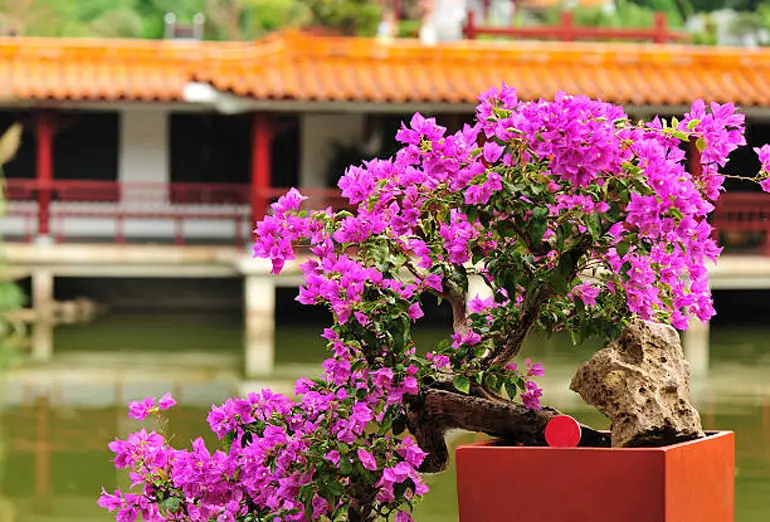
Just like any other Bonsais, your Bougainvillea Bonsai can live for many years as long as you take care of it properly. For starters, you need to plant it correctly.
You also need to ensure that it gets direct sunlight the whole day for it to thrive. It also needs to be pruned during the growing season and fed with fertilizer on a regular basis.
![Pittosporum Bonsai [Pittosporum Tobira]](https://www.bonsai-express.com/wp-content/uploads/2022/05/Pittosporum-Bonsai-365x200.jpg)
![Sorbus Bonsai [Sorbus Aucuparia]](https://www.bonsai-express.com/wp-content/uploads/2022/05/Sorbus-Bonsai-365x200.jpg)
![Tsuga Bonsai [Tsuga Canadensis]](https://www.bonsai-express.com/wp-content/uploads/2022/05/Tsuga-Bonsai-365x200.jpg)
![Tamarix Bonsai [Tamarix Ramosissima]](https://www.bonsai-express.com/wp-content/uploads/2022/05/Tamarix-Bonsai-365x200.jpg)